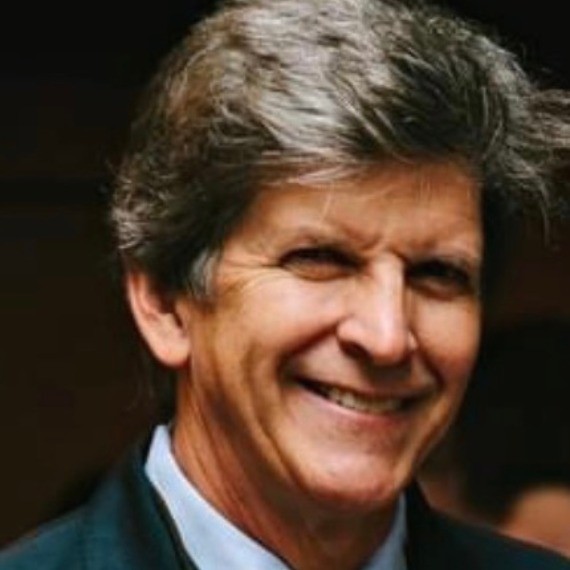This article is a part of the FTC v. Qualcomm: Analyzing the theory of the case symposium.
This post does not attempt to answer the question of what the court should decide in FTC v. Qualcomm because we do not have access to the information that would allow us to make such a determination. Rather, we focus on economic issues confronting the court by drawing heavily from our writings in this area: Gregory Werden & Luke Froeb, “Why Patent Hold-Up Does Not Violate Antitrust Law“; Luke Froeb & Mikhael Shor, “Innovators, Implementors and Two-sided Hold-up“; Bernard Ganglmair, Luke Froeb & Gregory Werden, “Patent Hold Up and Antitrust: How a Well-Intentioned Rule Could Retard Innovation.”
Not everything is “hold-up”
It is not uncommon—in fact it is expected—that parties to a negotiation would have different opinions about the reasonableness of any deal. Every buyer asks for a price as low as possible, and sellers naturally request prices at which buyers (feign to) balk. A recent movement among some lawyers and economists has been to label such disagreements in the context of standard-essential patents not as a natural part of bargaining, but as dispositive proof of “hold-up,” or the innovator’s purported abuse of newly gained market power to extort implementers. We have four primary issues with this hold-up fad.
First, such claims of “hold-up” are trotted out whenever an innovator’s royalty request offends the commentator’s sensibilities, and usually with reference to a theoretical hold-up possibility rather than any matter-specific evidence that hold-up is actually present. Second, as we have argued elsewhere, such arguments usually ignore the fact that implementers of innovations often possess significant countervailing power to “hold-out” as well. This is especially true as implementers have successfully pushed to curtail injunctive relief in standard-essential patent cases. Third, as Greg Werden and Froeb have recently argued, it is not clear why patent holdup—even where it might exist—need implicate antitrust law rather than be adequately handled as a contractual dispute. Lastly, it is certainly not the case that every disagreement over the value of an innovation is an exercise in hold-up, as even economists and lawyers have not reached anything resembling a consensus on the correct interpretation of a “fair” royalty.
At the heart of this case (and many recent cases) is (1) an indictment of Qualcomm’s desire to charge royalties to the maker of consumer devices based on the value of its technology and (2) a lack (to the best of our knowledge from public documents) of well vetted theoretical models that can provide the underpinning for the theory of the case. We discuss these in turn.
The smallest component “principle”
In arguing that “Qualcomm’s royalties are disproportionately high relative to the value contributed by its patented inventions,” (Complaint, ¶ 77) a key issue is whether Qualcomm can calculate royalties as a percentage of the price of a device, rather than a small percentage of the price of a chip. (Complaint, ¶¶ 61-76).
So what is wrong with basing a royalty on the price of the final product? A fixed portion of the price is not a perfect proxy for the value of embedded intellectual property, but it is a reasonable first approximation, much like retailers use fixed markups for products rather than optimizing the price of each SKU if the cost of individual determinations negate any benefits to doing so. The FTC’s main issue appears to be that the price of a smartphone reflects “many features in addition to the cellular connectivity and associated voice and text capabilities provided by early feature phones.” (Complaint, ¶ 26). This completely misses the point. What would the value of an iPhone be if it contained all of those “many features” but without the phone’s communication abilities? We have some idea, as Apple has for years marketed its iPod Touch for a quarter of the price of its iPhone line. Yet, “[f]or most users, the choice between an iPhone 5s and an iPod touch will be a no-brainer: Being always connected is one of the key reasons anyone owns a smartphone.”
What the FTC and proponents of the smallest component principle miss is that some of the value of all components of a smartphone are derived directly from the phone’s communication ability. Smartphones didn’t initially replace small portable cameras because they were better at photography (in fact, smartphone cameras were and often continue to be much worse than devoted cameras). The value of a smartphone camera is that it combines picture taking with immediate sharing over text or through social media. Thus, unlike the FTC’s claim that most of the value of a smartphone comes from features that are not communication, many features on a smartphone derive much of their value from the communication powers of the phone.
In the alternative, what the FTC wants is for the royalty not to reflect the value of the intellectual property but instead to be a small portion of the cost of some chipset—akin to an author of a paperback negotiating royalties based on the cost of plain white paper. As a matter of economics, a single chipset royalty cannot allow an innovator to capture the value of its innovation. This, in turn, implies that innovators underinvest in future technologies. As we have previously written:
For example, imagine that the same component (incorporating the same essential patent) is used to help stabilize flight of both commercial airplanes and toy airplanes. Clearly, these industries are likely to have different values for the patent. By negotiating over a single royalty rate based on the component price, the innovator would either fail to realize the added value of its patent to commercial airlines, or (in the case that the component is targeted primary to the commercial airlines) would not realize the incremental market potential from the patent’s use in toy airplanes. In either case, the innovator will not be negotiating over the entirety of the value it creates, leading to too little innovation.
The role of economics
Modern antitrust practice is to use economic models to explain how one gets from the evidence presented in a case to an anticompetitive conclusion. As Froeb, et al. have discussed, by laying out a mapping from the evidence to the effects, the legal argument is made clear, and gains credibility because it becomes falsifiable. The FTC complaint hypothesizes that “Qualcomm has excluded competitors and harmed competition through a set of interrelated policies and practices.” (Complaint, ¶ 3). Although Qualcomm explains how each of these policies and practices, by themselves, have clear business justifications, the FTC claims that combining them leads to an anticompetitive outcome.
Without providing a formal mapping from the evidence to an effect, it becomes much more difficult for a court to determine whether the theory of harm is correct or how to weigh the evidence that feeds the conclusion. Without a model telling it “what matters, why it matters, and how much it matters,” it is much more difficult for a tribunal to evaluate the “interrelated policies and practices.” In previous work, we have modeled the bilateral bargaining between patentees and licensees and have shown that when bilateral patent contracts are subject to review by an antitrust court, bargaining in the shadow of such a court can reduce the incentive to invest and thereby reduce welfare.
Concluding policy thoughts
What the FTC makes sound nefarious seems like a simple policy: requiring companies to seek licenses to Qualcomm’s intellectual property independent of any hardware that those companies purchase, and basing the royalty of that intellectual property on (an admittedly crude measure of) the value the IP contributes to that product. High prices alone do not constitute harm to competition. The FTC must clearly explain why their complaint is not simply about the “fairness” of the outcome or its desire that Qualcomm employ different bargaining paradigms, but rather how Qualcomm’s behavior harms the process of competition.
In the late 1950s, Nobel Laureate Robert Solow attributed about seven-eighths of the growth in U.S. GDP to technical progress. As Solow later commented: “Adding a couple of tenths of a percentage point to the growth rate is an achievement that eventually dwarfs in welfare significance any of the standard goals of economic policy.” While he did not have antitrust in mind, the import of his comment is clear: whatever static gains antitrust litigation may achieve, they are likely dwarfed by the dynamic gains represented by innovation.
Patent law is designed to maintain a careful balance between the costs of short-term static losses and the benefits of long-term gains that result from new technology. The FTC should present a sound theoretical or empirical basis for believing that the proposed relief sufficiently rewards inventors and allows them to capture a reasonable share of the whole value their innovations bring to consumers, lest such antitrust intervention deter investments in innovation.





